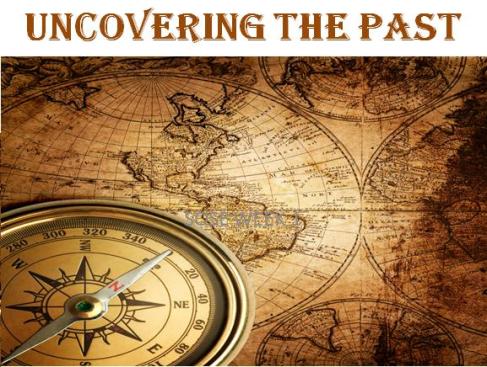One of the topics taught for Year 9 SOSE lesson of Year 9 is..
THE GOLD RUSH!
Some part of this lesson’s power point slides could be found on https://drive.google.com/file/d/0B7O3Bxh-4is4eE5OZlpkT2VQbEk/edit?usp=sharing . The movies watched in the classroom about Events leading to the Gold Rush and Eureka Rebellion could be found on Youtube.
And.. here’s the summary taken from THe Australian Government’s website…
There is no doubt that the gold rushes had a huge effect on the Australian economy and their development as a nation.
In 1851, Edward Hargraves discovered a ‘grain of gold’ in a waterhole near Bathurst. Hargraves was convinced that the similarity in geological features between Australia and the California goldfields (from where he had just returned) boded well for the search of gold in his homeland. He was proved correct. He named the place ‘Ophir’, reported his discovery to the authorities, and was appointed a ‘Commissioner of Land’. He received a reward of 10,000, plus a life pension. The discovery marked the beginning of the Australian gold rushes and a radical change in the economic and social fabric of the nation.
In 1852 alone, 370,000 immigrants arrived in Australia and the economy of the nation boomed.
The ‘rush’ was well and truly on. Victoria contributed more than one third of the world’s gold output in the 1850s and in just two years the State’s population had grown from 77,000 to 540,000!
The number of new arrivals to Australia was greater than the number ofconvicts who had landed here in the previous seventy years. The total population trebled from 430,000 in 1851 to 1.7 million in 1871.
The gold bullion that was shipped to London each year brought a huge flow of imports. The goldfield towns also sparked a huge boost in business investment and stimulated the market for local produce. The economy was expanding and thriving.
Because so many people were travelling to and from the goldfields, the 1850s also saw the construction of the firstrailway and the operation of the first telegraphs.
The rush to the rest of Australia
Following the gold rushes of NSW and Victoria, deposits were uncovered throughout the land. Only South Australia failed to produce any gold deposits of significance.
Multiculturalism on the goldfields
Soon after the discovery of the goldfields in Victoria an exodus of unprecedented volume started, bringing to Australia people with a range of skills and professions, unthought of prior to the discovery of gold.
Australia attracted adventurers from all around the world. The majority of these new arrivals were British but also included Americans, French, Italian, German, Polish and Hungarian exiles.The largest foreign contingent on the goldfields was the 40,000 Chinese who made their way to Australia.
In 1861, Chinese immigrants made up 3.3 per cent of the Australian population, the greatest it has ever been. These Chinese were nearly all men (38,337 men and only eleven women!) and most were under contract to Chinese and foreign businessmen. In exchange for their passage money, they worked on the goldfields until their debt was paid off. Most then returned to China. Between 1852 and 1889, there were 40,721 arrivals and 36,049 departures.
Racism
There were campaigns to oust the Chinese from the goldfields. The motivation was based on racism and fear of competition for dwindling amounts of easily found gold as the Chinese were known as untiring workers.
A simmering discontent
Diggers on the Turon fields, on the Turon River near Bathurst, had grown angry and had threatened to riot if the cost of licensing fees was not reduced. The monthly fee of 30 shillings for each claim was tough to pay in hard times and the claims were only 13.5 square metres on the surface, which made them difficult to work.
The governor of New South Wales, Governor Fitzroy, wisely reduced the fees by two thirds, but stood firm on the way it was collected, so resented by the diggers who called them the police ‘digger hunts’. Police would descend on the goldfields seeking out those diggers who had not paid their fees. Those who hadn’t paid were hauled before magistrates and fined 5 for the first offence. The fine doubled for each subsequent offence.
As the police digger hunts grew more unpopular, the police began using more and more force.
The Eureka Stockade

The Eureka Flag was based on the constellation of the Southern Cross. Courtesy of the
Ballarat Fine Art Gallery and Australian Museums and Galleries Online.
Between 1851 and 1854 tension was building on the goldfields. Clashes between the miners and the authorities became more frequent with significant discontent brewing over the injustice of the goldfield licensing system and police corruption.
At Ballarat, the tension was rising quickly. The Ballarat Reform League was set up under the leadership of an Irish engineer, Peter Lalor. His fellow rebels were a passionate and colourful bunch, including a Prussian republican, Fredrick Vern; the Italian redshirt, Raffaelo Carboni; and the Scottish Chartist, Tom Kennedy.
In December 1854, 1000 men gathered at Eureka, on the outskirts of Ballarat and unfurled their flag, a white cross and stars on a blue field, to proclaim their oath:
We swear by the Southern Cross to stand truly by each other, and fight to defend our rights and liberties.
In a tragic climax to the rising tensions, troops from Melbourne overran the stockade and killed 22 of its defenders.
Vindication
Juries in Melbourne refused to convict the rebel leaders who were put on trial for high treason. A Royal Commission condemned the goldfield administration and the miners’ grievances were remedied. Their demands for political representation were also met. Within a year, Peter Lalor – the leader of the rebels – became a member of the Victorian parliament.
The end of transportation
The discovery of gold in NSW and Victoria accelerated the abolition of convict transportation to the east coast of Australia, and ultimately to the nation as a whole. By continuing to send convicts to the eastern colonies, it was, in effect, giving free passage to potential gold diggers. And why would the new convict arrivals want to work for a living when a fortune awaited them on the goldfields
Source: http://australia.gov.au/about-australia/australian-story/austn-gold-rush
And here is the the review questions for this chapter:
- Who is Edward Hammond Hargraves?
- Why is it said that Hargraves’s luck is not in America, but Australia?
- What happened to convicts who said he found gold and what did they finally do?
- What turned the trickle of miners heading for Ophir into flood
- What diseases that were suffered by the diggers?
- What happened to diggers without licences?
- What was the actual cause of Eureka Stockade?
- What made the Chinese diggers different from the others?
- Why did the bushrangers chose the career?
- Mention two reasons why the police wanted Ned Kelly dead?
- Mention two reasons why Ned Kelly is considered a hero!
- Who was Constable McIntyre?
- Explain in points about political independence after the Gold Rush?
- Explain in points about transport & communication system changes after the Gold Rush?
- Explain in points about the cultural growth after the Gold Rush?
- Explain in points about economic strength after the Gold Rush?
- Explain in points about population boom after the Gold Rush?
- Explain in points about damaging ‘seeds’ after the Gold Rush?
GOOD LUCK





 Dan akhirnya… buku keroyokan ‘The
Dan akhirnya… buku keroyokan ‘The 
 Chinese gold digger starting for work, circa 1860s. Image courtesy of
Chinese gold digger starting for work, circa 1860s. Image courtesy of  The Eureka Flag was based on the constellation of the Southern Cross. Courtesy of the
The Eureka Flag was based on the constellation of the Southern Cross. Courtesy of the 




Anda harus log masuk untuk menerbitkan komentar.